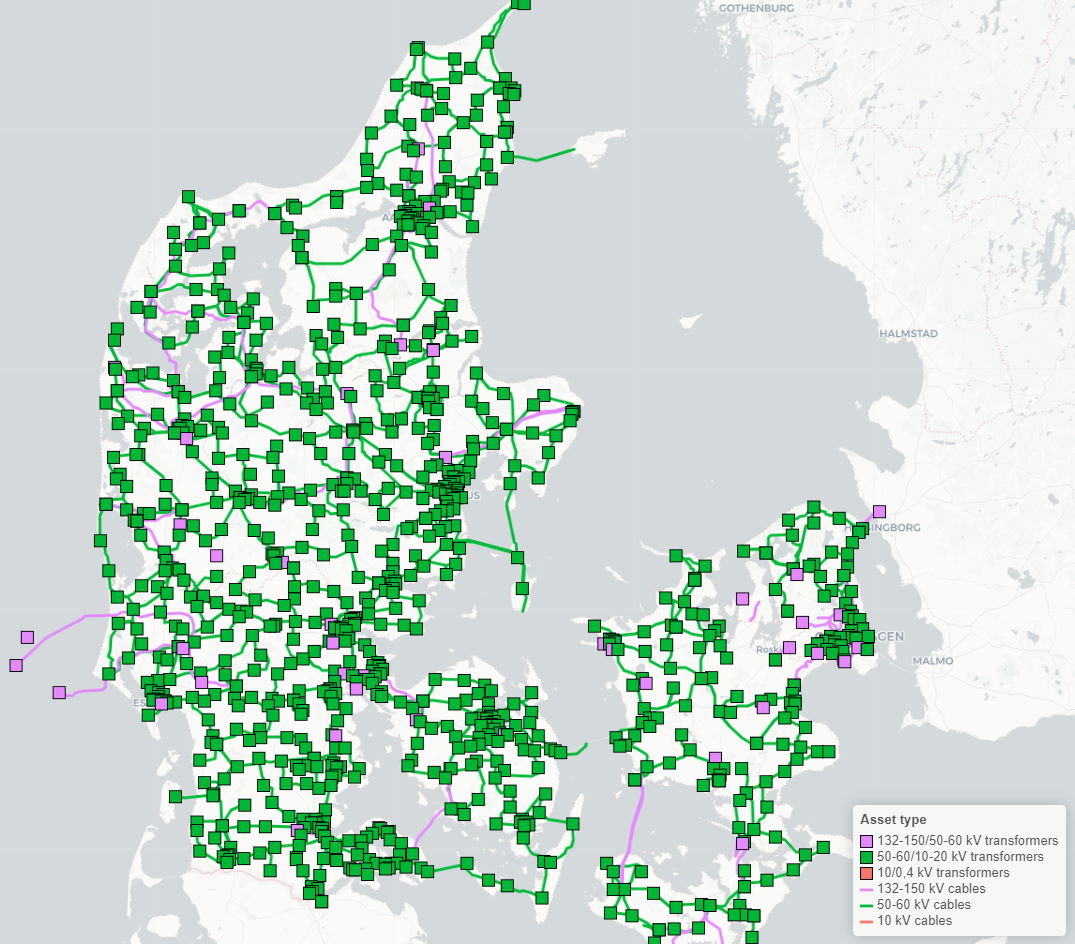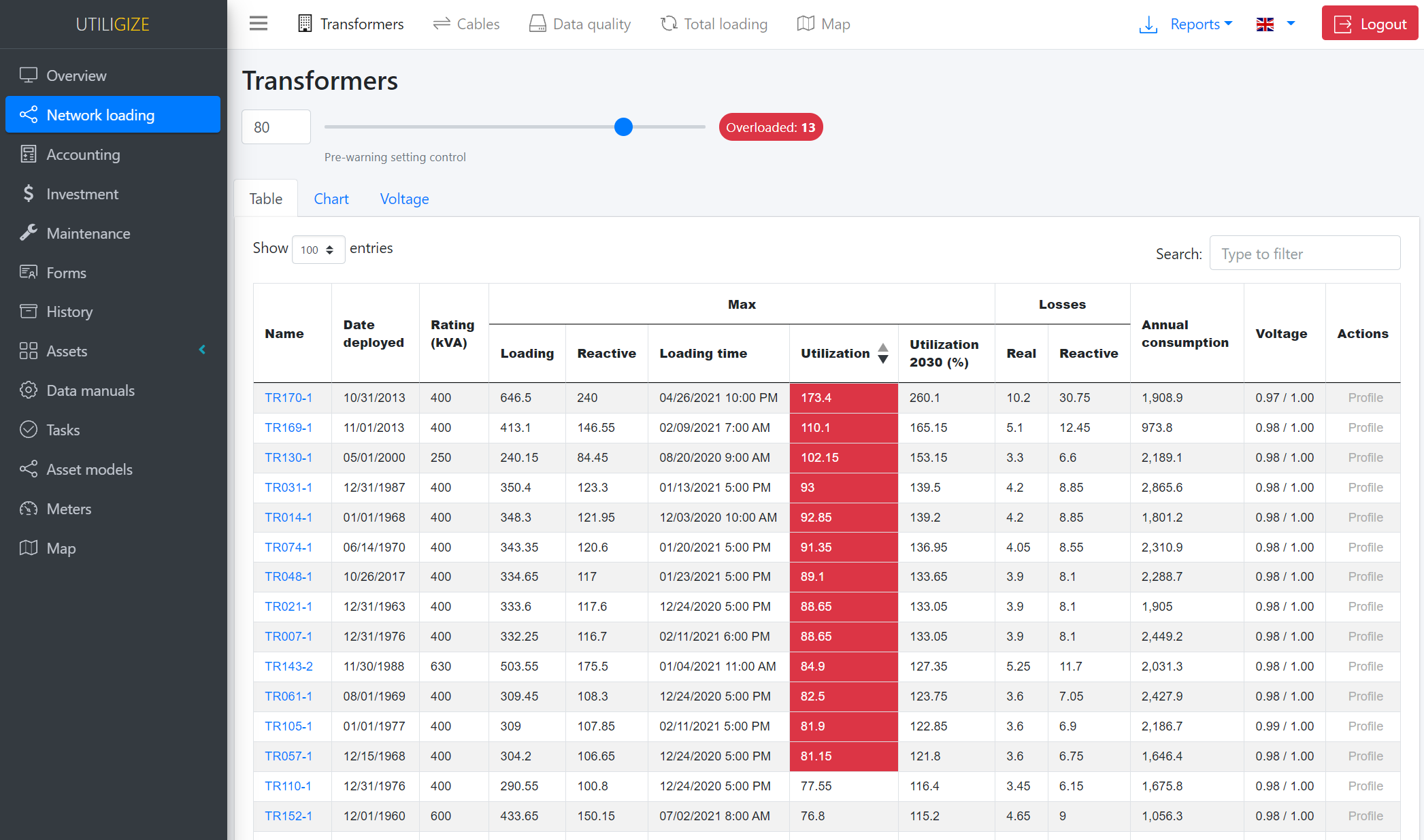At Utiligize, we’ve spent the last couple of years fine-tuning our asset management software to minimise costs for utilities. Losses are a key driver of costs, whether you operate a gas, water, heating or power network. Power system losses amount to about 7.5% of the power delivered to Danish consumers, with 4% being in the distribution system (the last mile), costing electricity customers 545M DKK (€73M) in 2020 alone.
Here’s an interactive visualisation of electrical losses in the the Danish 50/60kV grid, as a function of transmitted power, conductor length and cross-sectional area:
Interactive plot of the simulated losses in the Danish distribution grid (click and drag to rotate).
Each line in the 3D plot above is an underground cable or overhead line, simulated in the complete network for a year, where the losses increase with transmitted power and reduce with conductor thickness (cross-sectional area). The line length also increases losses, meaning that there are big gains to be had if you can reduce the distance between production and consumption.
When deployed with a customer, our asset management system uses pandapower to perform load flow simulations every day on live, in-house data, but the 3D result shown above comes from a static model of the Danish high voltage power system, as can be seen below:
Data based on the Danish 50-60kV grid used for our loss studies.
There are lots of practical things that can reduce losses, like choosing the right types of cables, voltage levels and topology configurations. What’s more, network losses don’t vary linearly with the conducted power, but instead increase with the square of the current transmitted, which means it can be optimal to operate a distribution system with a healthy reserve in normal operating conditions. Making optimal dispatch decisions with algorithms like the optimal power flow (OPF) model is also important. The OPF has been well-understood in academia since the 1960s, yet in Europe, with our simple, zonal-based electricity markets, cost minimisation isn’t implemented particularly rigorously. Maybe the green transition will force us to relearn these old tricks to avoid quadratic cost increases due to doubling electricity consumption.
At Utiligize, our asset management platform presents load flow results as a set of priority lists, identifying where the problems exist today, and when they will occur as electrification accelerates in the coming years. Get in touch if you’d like a demo!
Utiligize’s asset management platform showing load flow results.